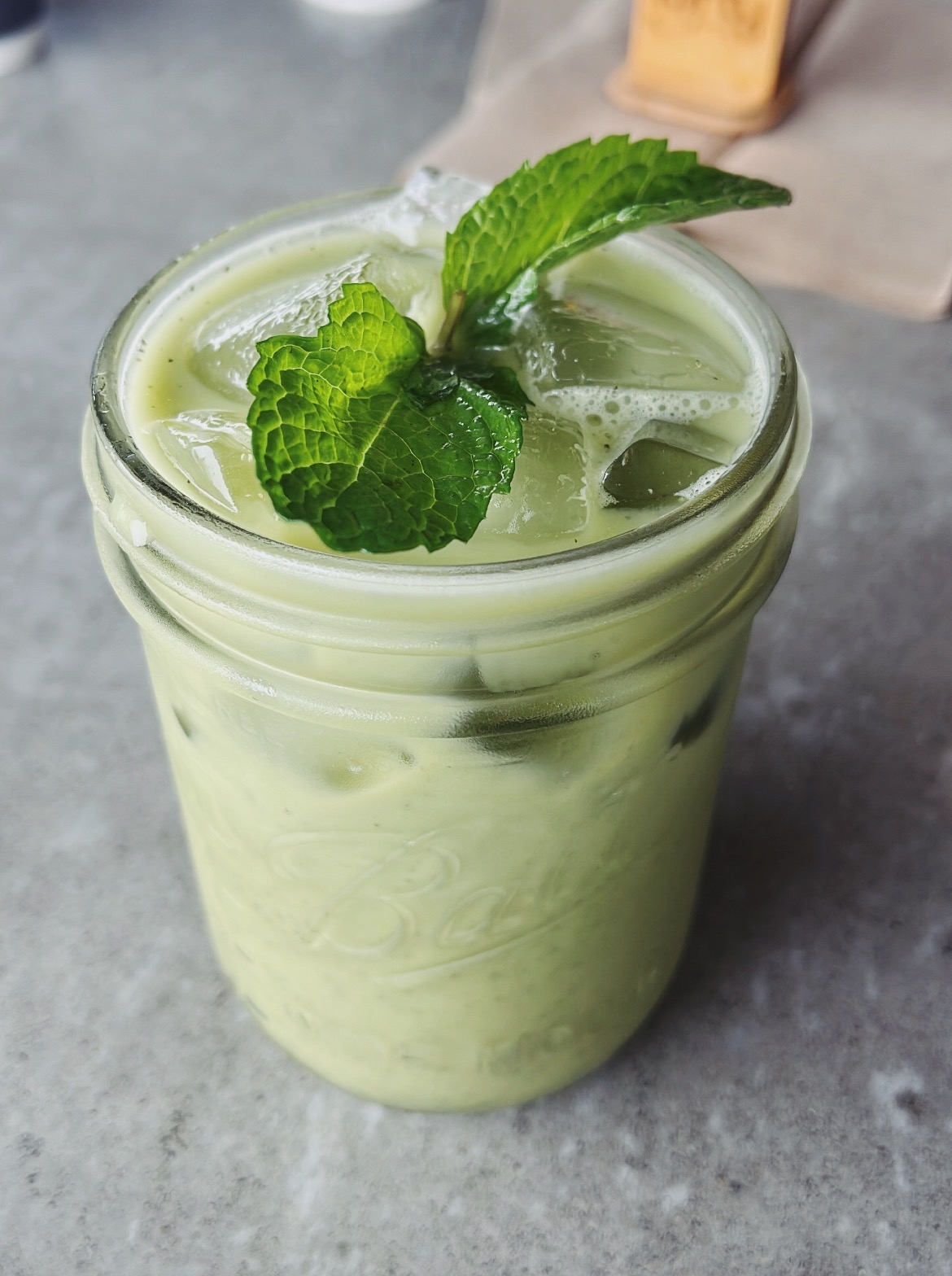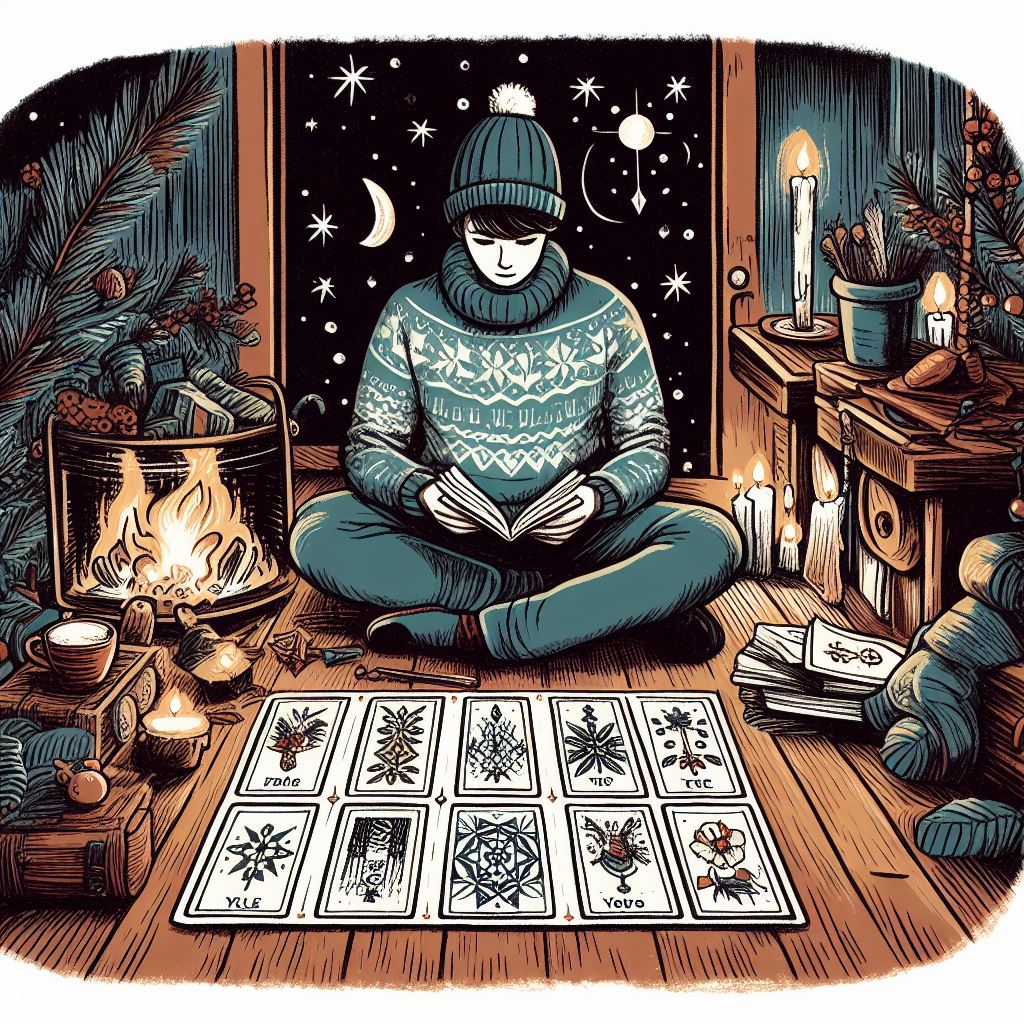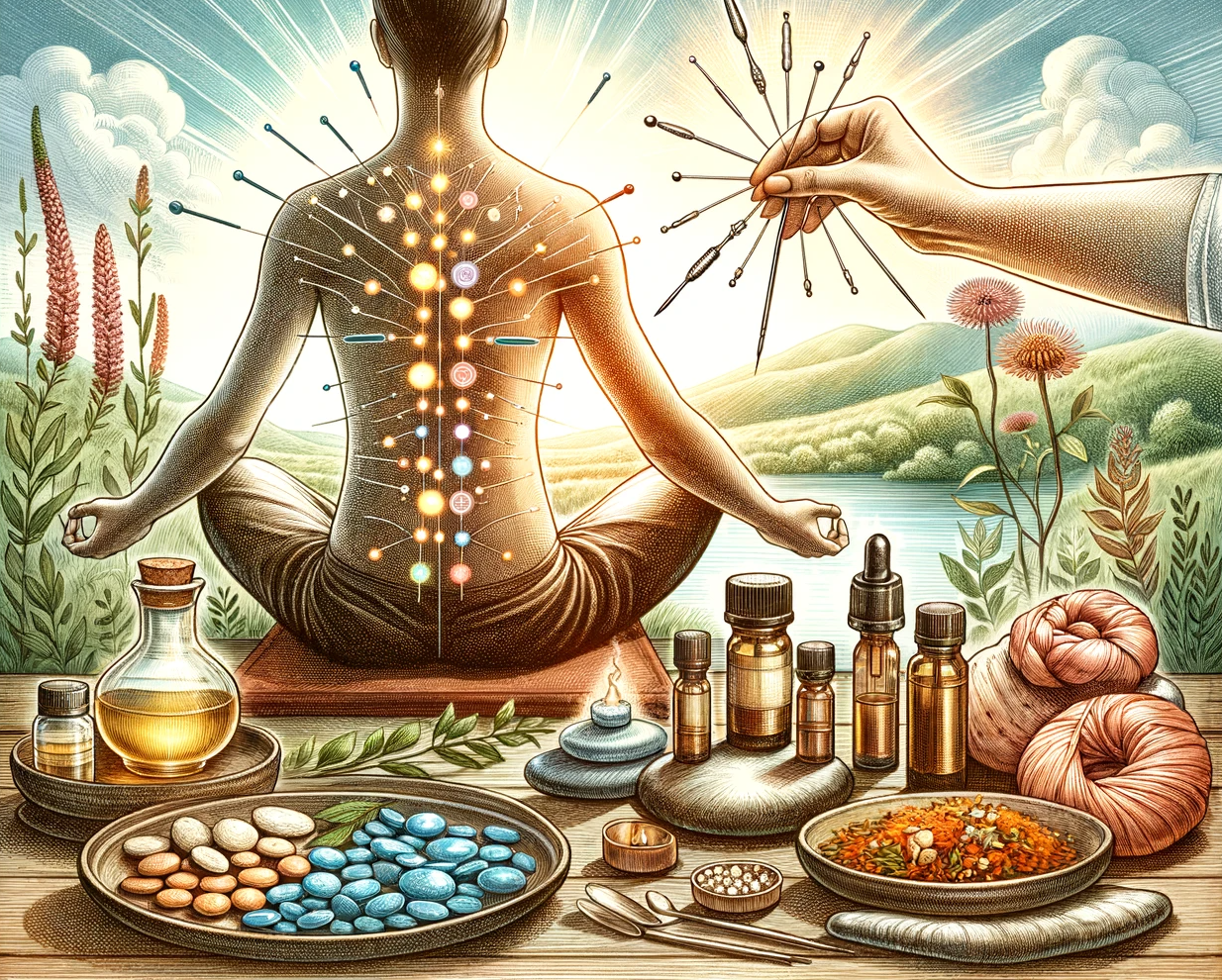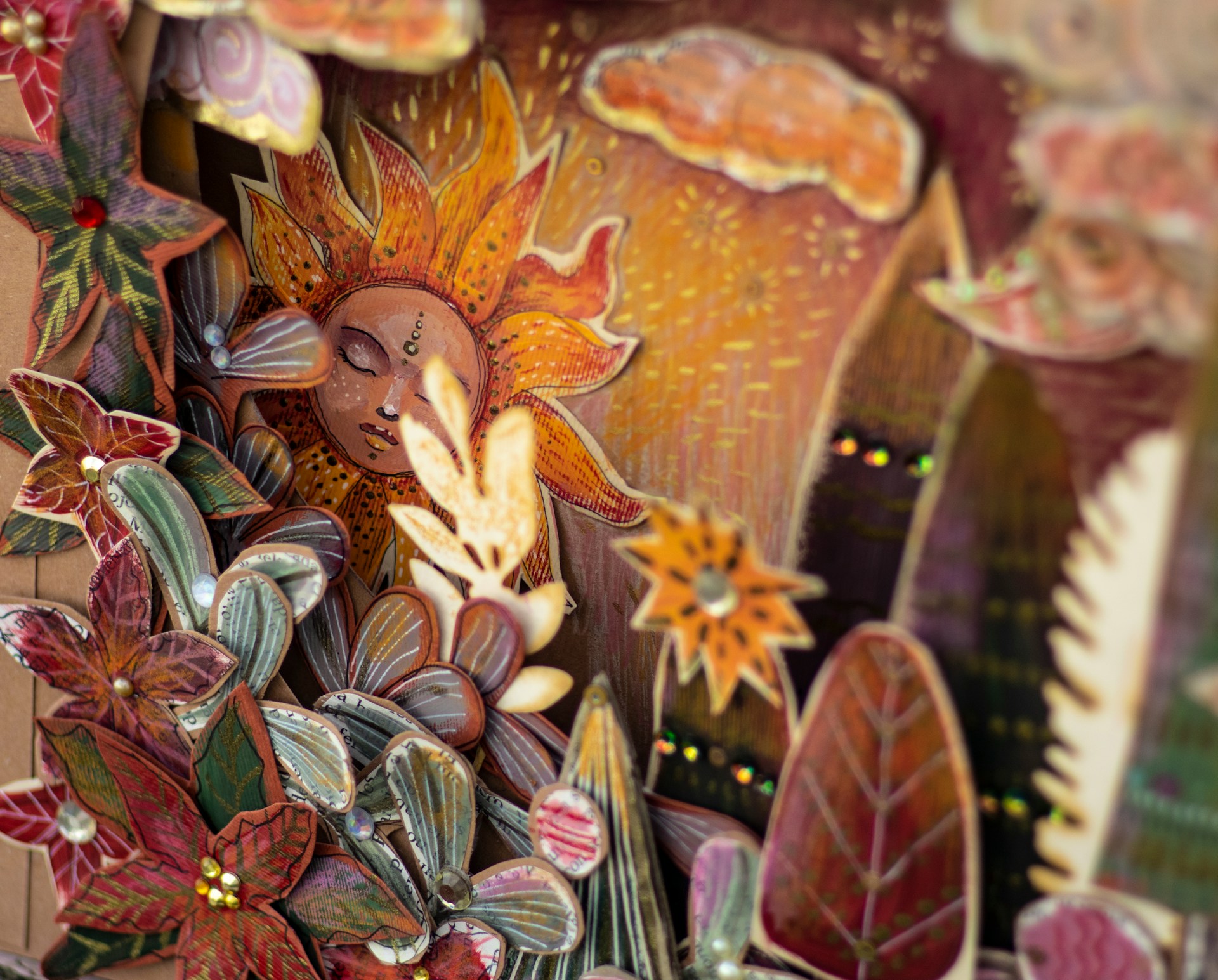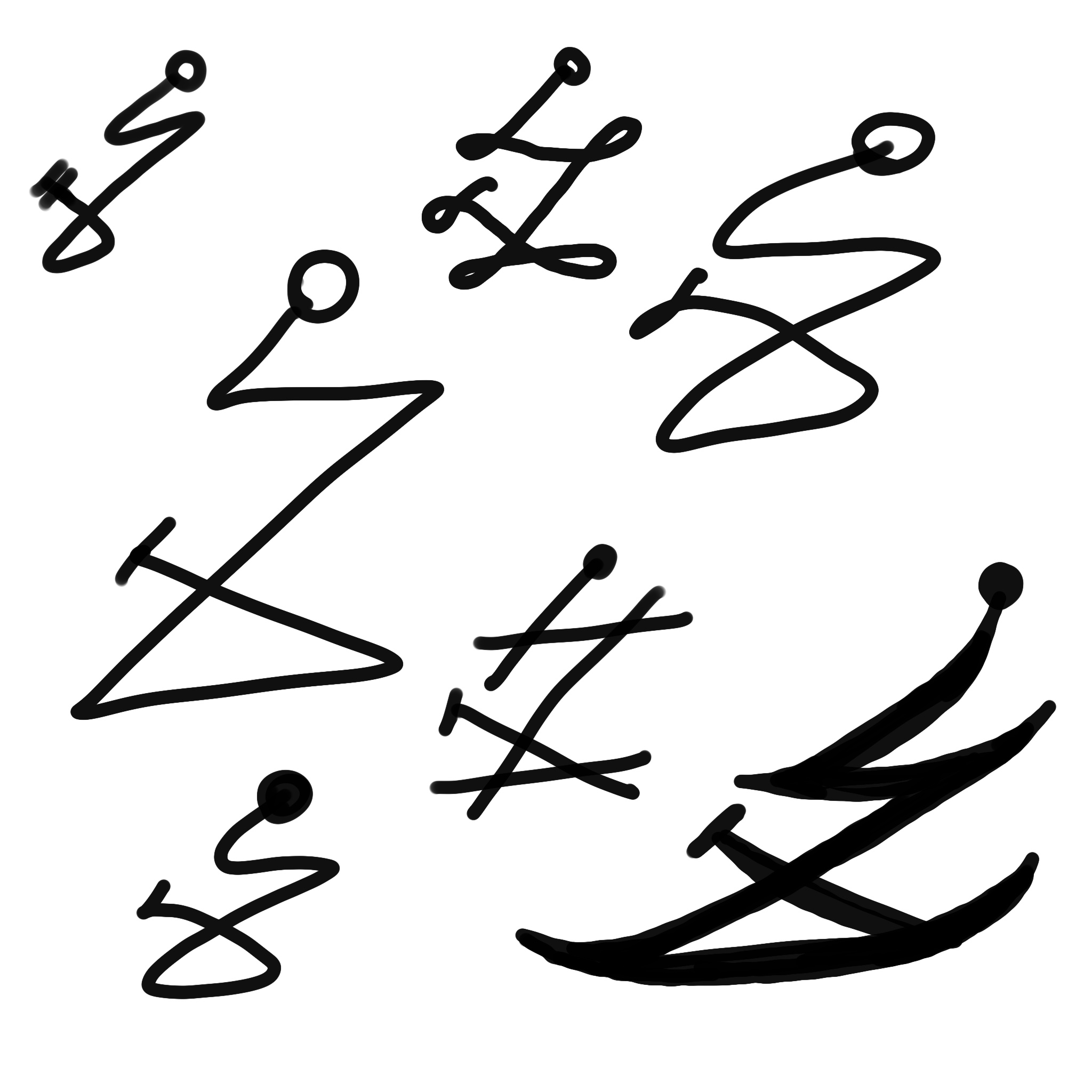As winter blankets the earth and the longest night of the year approaches, we find ourselves at the threshold of Yule, a time steeped in ancient tradition and rich in symbolism.
This season is not just about the physical return of light, but also about the spiritual resurgence of the Divine Feminine. In many cultures, this time of year is synonymous with the reawakening of the goddess energy, marking a period of introspection, renewal, and celebration.
Here, we delve into the mysteries of Yule and explore how the Divine Feminine manifests during this sacred time, offering insights and practices that resonate with this powerful seasonal transformation.
The Historical Roots of Yule
Origins in Ancient Traditions
Yule, or the Winter Solstice, has been celebrated for millennia, marking the point when the darkest day gives way to the gradual return of the sun. Ancient civilizations, from the Norse to the Romans, held festivities around this time, honoring deities and the forces of nature that govern life and death.
These celebrations were not just about merrymaking but were deeply rooted in the cyclical patterns of the earth, symbolizing the death and rebirth of the sun.
Connection with the Winter Solstice
The Winter Solstice, the shortest day of the year, has been a pivotal time for many cultures. It’s a natural turning point, a moment of transition from darkness into light, cold into warmth.
This celestial event was often seen as a time of rebirth, where the old is released and the new is welcomed. The return of the sun was celebrated as a sign of hope and a promise of renewed life.
Early Celebrations of the Divine Feminine
In these ancient festivities, the Divine Feminine often played a central role. She was revered as the life-giving mother, the source of fertility and abundance.
In Norse tradition, for example, the goddess Frigg was honored during Yule, symbolizing love, foresight, and wisdom. These early celebrations set the stage for understanding the Divine Feminine’s integral role in Yule traditions, as a symbol of nurturing, renewal, and the cyclical nature of life.
Understanding the Divine Feminine
Defining the Divine Feminine
The Divine Feminine is a concept that transcends any single deity or tradition. It represents the universal qualities of nurturing, intuition, empathy, and creation. The Divine Feminine is about connection — to oneself, to others, and to the natural world.
It’s an energy that exists within all of us, regardless of gender, and serves as a source of strength, guidance, and wisdom.
Goddesses Associated with Yule
Across various cultures, different goddesses are associated with Yule. For instance, in Celtic tradition, Brigid, the goddess of fire, healing, and poetry, is often celebrated. In Slavic folklore, the goddess Marzanna symbolizes winter and death but also the promise of new life.
These goddesses embody different aspects of the Divine Feminine, from creation to transformation, mirroring the cycle of death and rebirth inherent in Yule.
Symbolism of Rebirth and Renewal
Yule is deeply connected to themes of rebirth and renewal, reflecting the essence of the Divine Feminine. It’s a time when the old year passes away, and the new year is born, mirroring the cycle of life, death, and rebirth. This period symbolizes the potential for personal transformation and renewal, encouraging us to embrace change and growth.
Yule Traditions and the Divine Feminine
Overview of Traditional Celebrations
Yule traditions are rich and varied, stemming from ancient practices that honor the return of the light and the rebirth of the sun. These traditions include lighting candles, burning Yule logs, and gathering with loved ones. Each of these practices has symbolic significance, reflecting the interplay between darkness and light, rest and awakening.
Honoring the Divine Feminine in Traditions
Many Yule traditions specifically honor the Divine Feminine. The act of gathering and feasting, for instance, symbolizes the nurturing aspect of the goddess energy. The use of evergreen decorations represents eternal life and the enduring nature of the Divine Feminine.
In some practices, specific rituals are conducted to invoke goddess energies, fostering a deeper connection with these powerful archetypes.
Modern Adaptations and Practices
In modern times, Yule celebrations have adapted to fit contemporary lifestyles while retaining their ancient roots. People might create altars dedicated to goddess energies, perform rituals that focus on personal renewal, or simply take time to reflect on the past year. These modern practices offer a way to connect with the ancient traditions of Yule and honor the Divine Feminine in meaningful, personal ways.
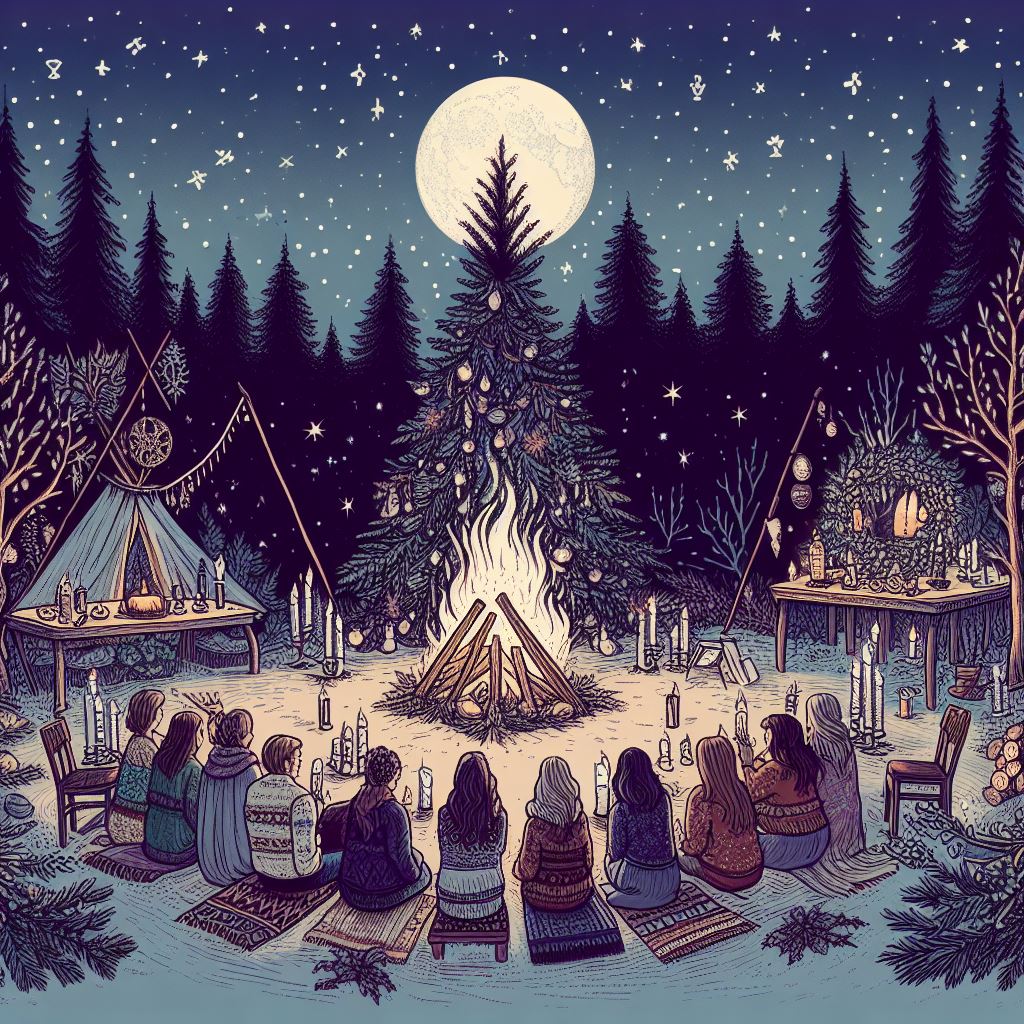
The Role of Nature and the Divine Feminine at Yule
Nature’s role in Yule celebrations is profound, serving as a direct reflection of the Divine Feminine. This section highlights the importance of natural elements and how they embody the principles of the Divine Feminine during the Yule season.
Significance of Natural Elements in Yule
Yule is deeply connected to the natural world, with elements like evergreens, holly, and mistletoe playing significant roles. Evergreens symbolize eternal life and resilience, holly represents protection and the triumph of life over death, and mistletoe is a symbol of peace and healing.
These elements are not only decorative but also serve as powerful symbols of the enduring strength and nurturing qualities of the Divine Feminine.
Nature as an Embodiment of the Divine Feminine
The natural world during Yule is a manifestation of the Divine Feminine. The quiet of the snow-covered earth reflects the introspective quality of this time, inviting us to look inward and embrace our intuitive nature. The gradual return of light mirrors the nurturing aspect of the Divine Feminine, gently guiding us out of darkness and into a period of renewal and growth.
Practices to Connect with Nature During Yule
Engaging with nature during Yule can be a deeply spiritual practice. Simple activities like walks in nature, collecting natural elements for a Yule altar, or meditating outdoors can help foster a connection with the Divine Feminine. These practices encourage a sense of harmony with the natural world, aligning us with the cycles of the earth and the energies of the season.
Rituals and Magick: Invoking the Divine Feminine at Yule
Yule is a time ripe for rituals and magick that honor the Divine Feminine. This section delves into specific practices and tools used to invoke and celebrate goddess energies during this sacred season.
Specific Rituals and Practices
There are numerous rituals to honor the Divine Feminine at Yule. These might include lighting candles to symbolize the return of light, performing a ritual bath for purification and renewal, or creating a Yule altar with symbols of the goddess. Each ritual serves as a way to actively engage with the energies of the season and the aspects of the Divine Feminine.
Use of Candles, Crystals, and Other Tools
Candles are a central part of Yule magick, representing light and warmth. Different colored candles can be used to invoke various aspects of the Divine Feminine. Crystals like moonstone, which symbolizes intuition, or rose quartz, representing love and compassion, can also be incorporated into rituals. These tools not only enhance the ritual experience but also serve as physical representations of the qualities we seek to embody.
Creating a Sacred Space for Celebration
Creating a sacred space is essential for Yule rituals. This can be a designated area in your home where you set up your altar, meditate, or perform rituals. Decorating this space with natural elements, symbols of the goddess, and items that hold personal significance can help create a conducive environment for spiritual practice and reflection.
Reflections and Meditation: Personal Connections with the Divine Feminine
Yule is an ideal time for personal reflection and meditation, allowing for a deeper connection with the Divine Feminine. This section offers guidance on how to use these practices to explore and strengthen this connection.
Guided Meditation Practices
Guided meditations can be a powerful tool for connecting with the Divine Feminine. These might involve visualizing a journey with a goddess, reflecting on the qualities of the Divine Feminine, or simply sitting in quiet contemplation of the season’s energies.
Meditation allows for a personal, introspective experience, deepening our understanding and relationship with the Divine Feminine.
Reflections and Journaling Prompts
Journaling during Yule can provide insights into our personal journey with the Divine Feminine. Prompts might include reflecting on the past year, setting intentions for the new cycle, or exploring what the Divine Feminine means on a personal level. This practice can be a form of self-expression and exploration, offering a tangible way to track spiritual growth and understanding.
The Divine Feminine in Modern Times
In contemporary society, the Divine Feminine offers a source of empowerment and balance. This section explores how the principles of the Divine Feminine, as embodied in Yule traditions, remain relevant and transformative in modern times.
Relevance of the Divine Feminine in Contemporary Life
The Divine Feminine, with its focus on nurturing, intuition, and interconnectedness, offers valuable lessons for contemporary life. In a world often dominated by aggressive, competitive energies, the Divine Feminine provides a counterbalance, encouraging a more holistic, compassionate approach to life and relationships.
Inspiration and Empowerment from Yule and the Divine Feminine
Yule traditions that honor the Divine Feminine can inspire personal empowerment and balance. By embracing these principles, we can find strength in vulnerability, wisdom in intuition, and growth in change. The Divine Feminine encourages us to be true to ourselves, to care for others, and to respect the natural world.
Integrating Lessons of the Divine Feminine into Everyday Life
The lessons of the Divine Feminine can be integrated into everyday life beyond the Yule season. This might involve practicing mindfulness, engaging in compassionate communication, or seeking harmony with the natural world. By embodying the principles of the Divine Feminine, we contribute to a more balanced, nurturing, and inclusive society.
As we conclude our exploration of the Divine Feminine at Yule, we’re reminded of the enduring power and relevance of these ancient traditions. Yule is not just a time of celebration but also a period of deep spiritual significance, offering opportunities for reflection, renewal, and connection.
By honoring the Divine Feminine during this sacred season, we tap into a source of wisdom, strength, and transformation that can guide us through the darkest nights and into the light of a new year.


